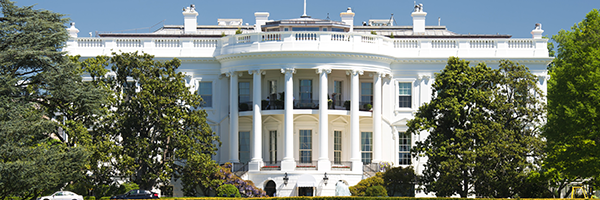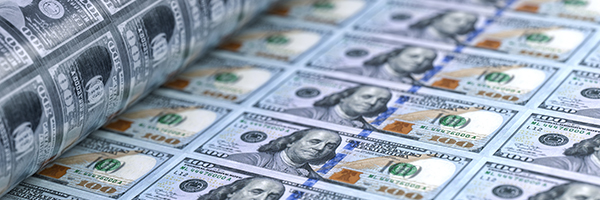 April 30, 2025
April 30, 2025
What You Need to Know Today:
Is the Powell Put back?
The S&P 500 gained more than 4% for this week. Some of that was the result of talk from the White House about possible tariff negotiations with China.As the week wore on, though, attention shifted from tariff talk to comments from Federal Reserve officials that seemed to suggest that the central bank might consider cutting interest rates as early as its June meeting if economic growth slowed. Yep, the Powell Put is back. In this scenario, bad earnings and bad economic news become good news because they push the Federal Reserve closer to cutting interest rates.

I’m taking advantage of today’s bounce to do some more selling
I just don’t see the upside here. Even companies that are announcing solid earnings beats are issuing cautious guidance. And as we can see from the example of UnitedHealth Group (UNH) when a stock misses this market doesn’t just take it out to the woodshed for punishment, but stands it up against the barn and shoots it.
Take these two no cost/low cost steps to protect your money–NOW
“You’re not paranoid if they’re really coming to get you” is good advice for the current insane financial market. I don’t think anyone should let his or her fears overwhelm them. It’s never good to make investment decisions in thrall to your emotions. But I don’t think this is the time to ignore your own fears that everything might be headed to hell in a hand basket. My own opinion is that the recent downtrend in the market will continue for a while and that selling will get worse before the trend turns. More than that, though, I’m worried that this selling will turn out to be more than the average Bear market downturn. The financial markets are showing signs of systemic stress of the sort that could turn a “normal” Bear market into a crisis. The key there, of course, is “could.” Odds of a recession have recently moved up to near 50%. Which means that there’s a 50% chance of no recession. The signs of systemic stress that I’ve noted belong to what I’d call “early warning maybes.” I wouldn’t ignore them but they aren’t a guarantee of disaster. So what to do?

Boeing takes a big hit from Trump tariffs
Last week China’s government asked Chinese airlines to pause purchases of aircraft-related equipment and parts from American companies like Boeing. China holds about 20% of the expected global demand for aircraft over the next two decades. President Donald Trump this month raised baseline tariffs on Chinese imports to 145%. In retaliation, China imposed a 125% tariff on US goods.
On Sunday a Boeing 737 Max jet intended for a China’s Xiamen Airlines landed back at the plane maker’s U.S. production hub. The plane was one of several 737 MAX jets–Boeing’s bestselling model–that had been waiting at Boeing’s Zhoushan completion centre for final work and delivery. Boeing’s order book had 130 planes scheduled for delivery to Chinese companies at the end of March for both commercial airlines and leasing firms, Airways Mag reports.

Did today’s stock tumble just save Powell’s job at the Fed?
The Standard & Poor’s 500 closed down 2.36% today and the Nasdaq Composite ended 2.55% lower. The consensus read–and mine too–is that the selling was driven by fears that President Donald Trump would move to oust Jerome Powell as head of the Federal Reserve before his term at the top of the Fed ends in 2026.. Today President Trump again called on the Fed to cut interest rates. On Truth Social Trump posted that he favors “preemptive cuts” to interest rates and called the Fed chairman a “loser.” An attempt to remove Powell before the end of his term would end up atbthe Supreme Court and would probably be ruled illegal. Probably. “The market doesn’t like the Fed’s independence being challenged,” Joe Saluzzi, co-manager of trading at Themis Trading told Bloomberg. “The market can at least make an attempt at predicting what an independent Fed will do. If their independence is challenged, then more erratic (unpredictable) decisions could be made. And the market does not like unpredictability.”

Saturday Night Quarterback says (on a Sunday), For the week ahead expect …
I expect more opinions and some additional data on when the Trump tariffs will hit U.S. and global economic growth. And how big the hit will be.

Special Report: Buys and sells–and other money moves for Trump’s first 100 days. The complete 100 Days
What you need as an investor and what your portfolio needs is a road map to the likely events of the beginning of this new administration. And a take on what those events are likely to mean for the financial markets–and the prices of stocks and bonds. And recommendations on what moves to make to respond to the events of the first 100 days of a Trump Administration. Which is what this Special Report is all about. Here /i’ll give you an investor’s calendar to the first 100 days of Trump; a run-down of the likely effects on the financial markets of the events in the first 100 days; and recommendations for moves that you should make with your portfolio.
Live Market Report (20 minute delay)

Emergency Special Report: What to do NOW after the Trump tariff tumble–complete
Today the Standard & Poor’s 500 fell 4.25%, dropping into a correction. The NASDAQ Composite dropped 5.43%, also into a correction. The small cap Russell 2000 lost 6.59%. We don’t have to search for the cause of todays drop: yesterday President Donald Trump announced tariffs with a global minimum rate of 10% and rates on individual U.S. trading partners that included a 20% tariff on the European Union and an additional 34% tariff on Chinese goods. The fear is that the tariff increases will set off a global trade war of retaliation, and that the tariffs will push the United States into either a recession or stagflation. Take your pick about which to fear more. So what do you do NOW? That’s the topic of this Emergency Special Report.

Watch today for my Emergency Special Report: What to do NOW after the Trump tariff tumble
So today U.S. stocks are tumbling after President Trump’s tariff announcement yesterday. What do you do now?

Stocks plunge at the open on Trump tariffs–why and whither?
After weeks of trying to believe that President Donald Trump wasn’t serious about imposing massive tariffs on the rest of the world, Wall Street heard president Trump do exactly that from the Rose Garden yesterday. And today stocks opened down biggly. At 11:20 a.m. New York time, the Standard & Poor’s 500 was down 4.21%. The NASDAQ Composite and the NASDAQ 100 were lower by 5.24% and 4.64%, respectively. The small cap Russell 2000 had tumbled 4.63%. Shares of Apple (AAPL) were down 8.64%. Nike (NKE) was off 11.79%. Nvidia (NVDA) was lower by 6.66%. Why the huge drop?

Tesla deliveries drop worse than expected
Tesla (TSLA0 reported a 13% drop in vehicle sales in the first three months of the year, making it the company’s worst quarter since 2022.

Trump announces his new tariff plan; how will first the financial markets and then consumers react?
My first take away from President Donald Trump’s Rose Garden speech on his new global reciprocal tariff plan is that it worse than expected. In some cases shockingly worse.

Senate Republicans plan for $5.5 trillion in tax cuts; more than House $4.5 trillion
Senate Republicans have unveiled a budget blueprint that includes a $4 trillion (over 10 years) extension of President Donald Trump’s 2017 tax cuts, an additional $1.5 trillion in further tax reductions, and an increase in the debt ceiling of up to $5 trillion. Senate Republicans say they want to ensure that Congress does not need to vote on the debt ceiling again before the 2026 midterm elections
The Republican-controlled House recently pass a budget framework with $4.5 trillion in total cuts. And a $4 trillion incree in the debt ceiling.
Republicans say they are using accounting that assumes the cost of extending the expiring 2017 Trump tax cuts is $0.

Please watch my new YouTube video: Why the Fed is almost certain to be wrong
Today’s video is Why the Fed is Almost Certain to be Wrong. Blame it in lags. Lags make economic forecasting really difficult at the best of times. How long does it take policies like tariffs and tax cuts to actually affect the economy and show up in the data? Right now, we’re dealing with lags from a tariffs that will eventually raise consumer prices. We don’t know when this will hit people in the wallet and really start to affect the economy as a whole. Another problem is the upcoming Trump tax cuts. This will be stimulative to the economy and the Fed may have to look at raising rates again in effort to slow more inflation. If, however, the tariffs slow the economy enough to balance out the stimulative effect of the tax cuts, the Fed would look at lowering rates. There’s really little that monetary policy can do about tariff-caused price increases. White House accounting says the tariffs and tax cuts will balance each other, but it’s tough to say if the money coming out of consumer pockets are the same pockets benefiting from the tax cuts. All this to say, the Fed remains between a rock and a hard place, and has little chance of getting this right and will almost certaInly make a mistake. The question is, How big will the mistake be?

Manufacturing activity turns negative in March
U.S.factory activity contracted in March for the first time this year and prices accelerated sharply for a second month. The Institute for Supply Management’s manufacturing index declined 1.3 points last month to 49, according to data released Tuesday. In this index readings below 50 indicate contraction.

Data point from Europe: how big a hit will U.S. companies take from the Trump tariffs?
By itself, the display stand in the main Vodafone store in Venice doesn’t prove much. But with the context of European anger at U.S tariffs and consumer boycott of U.S. goods in countries like Denmark, I found the empty rack fro Apple’s iPhone and the big display of phones from China’s Xiaomi, well, suggestive.

Is Wall Street forecasting a correction–or talking stocks into one?
Goldman Sachs’ influential strategist David Kostin has just cut his target for the Standard & Poor’s 500 for a second time this month. (Kostin had first reduced his target from 6,500 on March 11.) He now expects the index to end the year at around 5,700 versus his previous estimate of 6,200. The new target implies a gain of just 2% from Friday’s close. In other words, you’d be better off buying a 6-month Treasury paying 4.23% and holding it to maturity.

More excitement for April 2, Liberation Day: Tesla reports first quarter deliveries
On 2 April, Liberation Day, President Donald Trump will announce a big new round of tariffs on global exports to the United States. And Tesla (TSLA) will release data for first-quarter deliveries. Analysts expect the report to show a dip on the same period last year.

Another vote in the White House for more tariffs
It’s not clear who White House advisor Peter Navarro speaks for but on Sunday he spoke up loudly for more tariffs. On Fox News Navarro claimed Sunday that President Donald Trump’s new tariffs would raise more than $6 trillion in federal revenue over the next decade. Exactly why that’s a good idea wasn’t clear from Navarro’s appearance since it would amount to the largest peacetime tax hike in modern U.S. history.

The dollar isn’t behaving like it’s supposed to–replacing dollar ETF with yen ETF
On Monday, March 31, I will sell the Invesco DB U.S. Dollar Index BullishFund ETF (UUP) out of the Perfect 5 ETF Portfolio and replace it with the Invesco CurrencyShares Japanese Yen ETF (FXY). I will leave the portfolio weighting at 25%. The yen ETF is up 5.32% in the last three months as of the close on March 28. It charges a 0.40% expense ratio.

What if the Trump tariffs are going to be bigger than Wall Street expects?
Wall Street is, clearly, afraid that President Donald Trump’s tariffs are going to significantly slow the U.S. economy. Those fears drove the Standard & Poor’s 500 down another 1.97% on Friday and sent the NASDAQ Composite down 2.70%. But I think that there’s still a large percentage of investors who think the tariffs won’t be as bad as their advance press suggests, either because they believe they’re simply negotiating ploys or because President Trump has history of barking worse than he bites. Frankly, I think those investors are wrong.

Saturday Night Quarterback says, For the week ahead expect…
The next big round of Trump tariffs and the March jobs numbers will be the big events of the week.

Economists cut their forecasts for GDP growth in 2025
In the latest Bloomberg survey, economists cut back their expectations for U.S. growth this year.Gross Domestic Product, (GDP) will grow at a 2% rate. That’s down from projections of 2.3% growth in the previous month’s poll
The economists in the survey lowered their projection for first-quarter growth by a full percentage point to 1.2%.

Bad inflation news is worse than expected
The Federal Reserve’s preferred inflation measure rose in February at a faster pace than in January. The rate of increase was also greater than economists had expected

More inflation data tomorrow and it’s not expected to be good
Friday’s core personal consumption expenditures (PCE) price index excluding food and energy—-the central bank’s preferred measure of underlying inflation-—is forecast to show signs of stickiness.

Trump to announce big, new auto tariffs
President Donald Trump will announce auto tariffs on Wednesday afternoon, Karoline Leavitt, the White House press secretary, said during a briefing with reporters at the White House.
Details of the tariffs are unclear–who following White House “policy” on tariffs is surprised at that? Stock markets fell on news. The Standard & Poor’s 500 closed down 1.12%. The NASDAQ Composite dropped 2.04%.

Moody’s warns on U.S. finances
Credit rating company, Moody’s Investors Service, one of the three big debt ratio companies, warned on Tuesday that President Donald Trump’s trade tariffs could hamper the country’s ability to cope with a growing debt pile and higher interest rates. The rating agency said that America’s “fiscal strength is on course for a continued multiyear decline”, having already “deteriorated further” since it assigned a negative outlook to America’s Aaa credit rating in November 2023.



